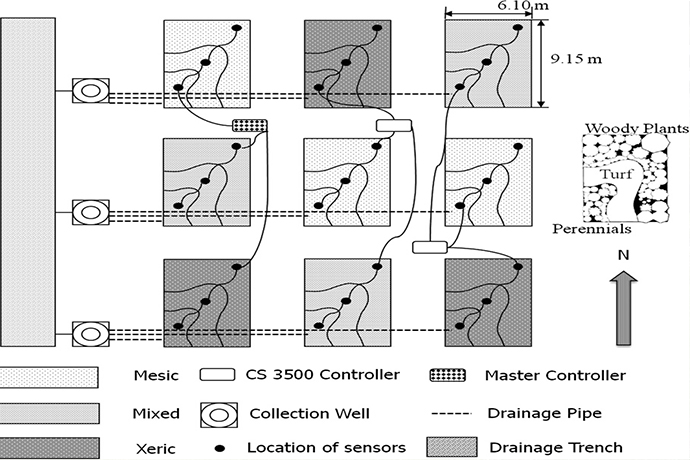Landscape Lysimeter
This project studied water use of three types of plants—woody, herbaceous perennial, turf—from three types of landscapes—Mesic, Mixed, Xeric.
Irrigation was applied for optimum landscape quality over two years and water use was measured using a water balance approach.
For woody plants and herbaceous perennials, we found that under well-watered conditions, canopy cover rather than plant type or water use classification was the key determinant of water use.
Homeowners and other landscape managers may achieve meaningful water savings by simply adjusting their landscape's planting density. Ongoing research will include imposition of drought conditions on landscapes.

A second project applied a water and nitrogen transport model to simulate nitrate leaching potential under over-irrigation and over-fertilization scenarios.
A Geographic Information System (GIS) approach was used to estimate nitrate leaching mass from urban turf areas.
Risk maps of nitrate leaching were obtained for over-irrigation and over-fertilization scenarios and efficient irrigation and fertilization scenarios.
The results showed improved irrigation and fertilization management may reduce turf nitrate leaching significantly, and result in more low nitrate leaching risk areas in urban areas of the Salt Lake Valley.
Related Peer-Reviewed Publications
- Sun, H., K. Kopp, and R. Kjelgren. 2012. Water efficient urban landscapes - integrating different water use categorizations and plant types. HortScience 47:254-263.
- Sun, H., and K. Kopp Identifying high-risk areas of N leaching in the Salt Lake Valley, Utah, USA. International Turfgrass Society Research Journal, Volume 12. 2013.

